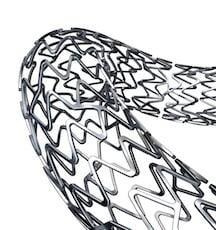
Image courtesy of Boston Scientific
After five years of almost constant lobbying efforts and numerous attempts by the U.S. House to push through a repeal of the medical device tax, legislation passed in December suspends the tax for the next two years. President Barack Obama signed a $1.8 billion taxation and spending bill Dec. 18, the Consolidated Appropriations Act of 2016, ending the threat of a looming government shutdown. The bill also contained a variety of tax credits, including the two-year moratorium on the device tax.
The 2.3 percent tax on medical device sales was implemented in 2013 as part of the Patient Protection and Affordable Care Act (PPACA). The tax was designed to help pay for healthcare reforms included in the act. The tax on medical devices was to be paid by the device manufacturer or importer. It was expected that millions of new insured patients entering the healthcare marketplace would help offset the cost of the tax for manufacturers in the form of expanded device sales. However, this greater demand did not materialize.
The Congressional Budget Office estimated the tax would generate $26 billion over the next decade. Reports of revenue from the first half of 2013 were $913 million, which was only about 60 percent of the expected revenue. However, with the suspension of the tax, no new revenue sources have been identified to offset the anticipated tax income.
Many experts have said that U.S. medical technology innovation is being hindered by a variety of factors, including rigid, expensive and lengthy regulatory review, reduced access to R&D capital due to the economy, and the institution of the medical device tax that was included in the 2010 Affordable Care Act. The device tax has been the most controversial since its inception, medical device companies arguing it would stifle R&D efforts and financially stifle start-up device companies that were already unprofitable.
“Numerous costly consequences were originally laid out by manufacturers in the wake of the tax implementation, including increased product and healthcare costs, layoffs, cuts in research and development (R&D) efforts, and delayed expansion plans,” said Jennifer Ryan, a medical device analyst for the healthcare market research firm GlobalData. “Particularly crippling to smaller companies, the tax posed significant challenges to product innovation and launch in the U.S. medical device market, a market already struggling under a stringent regulatory process and reimbursement pressures.”
Since the tax only affects products sold in the United States, whether by a foreign or domestic company, and does not apply to domestic products sold overseas, she said it served to strongly hinder product innovation and advancement in the domestic market.
“There was concern at the time that U.S. companies might look to use distribution channels overseas, where regulatory processes are less rigorous, to market products, thereby preventing U.S. patients from accessing the latest technologies,” Ryan explained. “Additionally, the funds that small and mid-sized companies would normally put towards product innovation and improvements might instead go towards paying the excise tax, inhibiting market development.”
Manufacturers Relieved
The Advanced Medical Technology Association (AdvaMed), the Medical Imaging and Technology Alliance (MITA) and the Medical Device Manufacturers Association (MDMA) applauded Congress in December for passage of the two-year tax suspension.
"America's medical technology companies, including our nearly 2 million employees and the countless patients we serve, appreciate the broad bipartisan effort to suspend the medical device tax,” said AdvaMed Board Chairman Vincent A. Forlenza, chairman, CEO and president of BD. “This critical relief would not be possible without the tireless efforts by a large group of champions in Congress as well as among the patient, provider and research communities. Congress and the administration have demonstrated that they recognize the negative effects of this tax. We urge policymakers to continue their work to eliminate the device tax and address other factors that are threatening the healthcare innovation ecosystem."
"We are grateful that Congress was able to come together to preserve U.S. jobs and medical innovation by delaying the device tax for two years," said MITA Board Chairman Nelson Mendes, president and CEO of mobile C-arm imaging systems maker Ziehm Imaging Inc. "The bipartisan cooperation we've seen gives us hope that policymakers will continue their work to fully address the device tax for employees, patients and advocates across the country who have been impacted by its harmful effects."
"MDMA thanks the tireless, bipartisan leadership in Congress that achieved this important milestone on the road toward permanently repealing the medical device tax," said MDMA Chairman Scott Huennekens, president and CEO of Verb Surgical. "MDMA has fought against this misguided policy since it was first proposed in 2009, and while suspension of the medical device tax is a positive step, we will remain focused on repealing a policy that only serves to punish a vital sector of America's innovation ecosystem."
Unfortunately, the medical device tax of 2013 became an impediment to innovation that springs from start-ups, and many established companies curtailed their investments in R&D and reduced their workforces to pay the new revenue tax, said Joe Kiani, chairman and CEO of patient monitoring systems maker Masimo.
"We applaud the bipartisan efforts of Congress and the administration to suspend the medical device tax for two years," Kiani said. "This two-year moratorium will allow us to immediately begin to increase our investment in our infrastructure and research and development."
Congressional Research on the Impact of the Tax
Analysis released in January 2015 by the Congressional Research Service, Congress’ non-partisan research arm, showed the tax had less of an impact on the industry than vendors claimed. Opponents of the tax claim that the device tax could have significant, negative consequences for the U.S. medical device industry and on jobs. The estimates in the report suggest fairly minor effects, with the impact of no more than two-tenths of 1 percent on output and employment in the industry. The Congressional Research Service said this limited effect is due to the small tax rate, the exemption of approximately half of output, and the relatively insensitive demand for health services. The analysis suggests that most of the tax will fall on consumer prices, and not on profits of medical device companies. The effect on the price of healthcare, however, will most likely be negligible because of the small size of the tax and small share of healthcare spending attributable to medical devices.
Viewed from the perspective of traditional economic and tax theory, the tax is challenging to justify. The report stated tax policy is more efficient when differential excise taxes are not imposed. It is generally more efficient to raise revenue from a broad tax base. Therefore excise taxes are usually based on specific objectives such as discouraging undesirable activities (e.g., tobacco taxes) or funding closely related government spending (e.g., gasoline taxes to finance highway construction). The report stated these justifications do not apply, other than weakly, to medical devices. The tax also imposes administrative and compliance costs that may be disproportionate to revenue.


 May 03, 2024
May 03, 2024 








